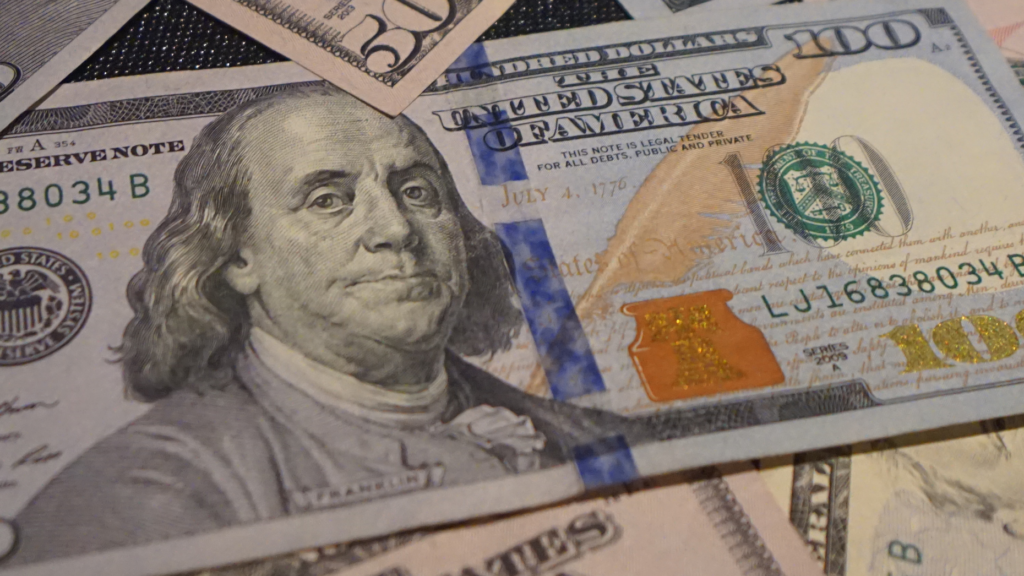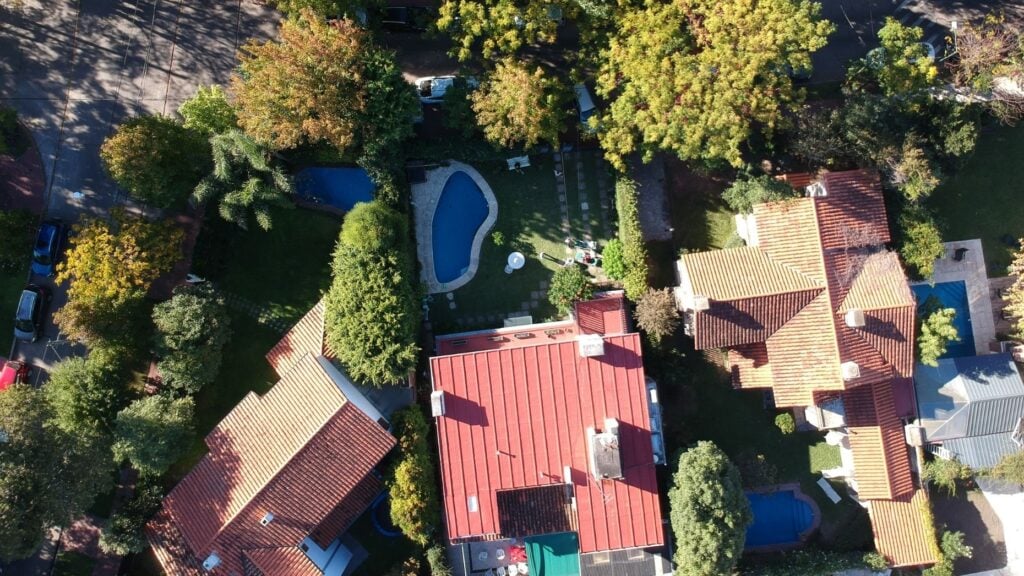Loews Corporation (NYSE:L) Q3 2022 Earnings Conference Call October 31, 2022 10:00 AM ET
Company Participants
Chris Nugent – Investor Relations
Jim Tisch – Chief Executive Officer
Jane Wang – Chief Financial Officer
Operator
Good day, everyone, and welcome to today’s Loews Corporation Q3 2022 Earnings Conference Call. At this time, all participants are in a listen-only mode. Please note this call is recorded. I will be standing by if you should need any assistance.
And it’s now my pleasure to turn the conference over to Mr. Chris Nugent.
Chris Nugent
Thank you, Shelby. Good morning, everyone, and welcome to Loews Corporation’s third quarter earnings conference call. A copy of our earnings release and investor presentation maybe found on our Web site, loews.com.
On the call this morning, we will have our Chief Executive Officer, Jim Tisch; and Chief Financial Officer, Jane Wang. Following our prepared remarks this morning, we will have a question-and-answer session with questions from our shareholders.
Before we begin, however, I will remind you that this conference call may include statements that are forward-looking in nature. Actual results achieved by the company may differ materially from those made or implied in any forward-looking statements due to a wide range of risks and uncertainties, including those set forth in our SEC filings. Forward-looking statements reflect circumstances at the time they are made. The company expressly disclaims any obligation to update or revise any forward-looking statements.
This disclaimer is only a brief summary of the company’s statutory forward-looking statements disclaimer, which is included in the company’s filings with the SEC. During the call today, we may also discuss non-GAAP financial measures. Please refer to our security filings and investor presentation for a reconciliation to the most comparable GAAP measures.
With that, I’d like to turn the call over to Jim. Jim, over to you.
Jim Tisch
Thank you, Chris, and good morning. Before I discuss our financial results, I’d like to tell you about some executive changes that are taking place at Loews Hotels. On January 1, of next year, Jon Tisch will become the Executive Chairman of Loews Hotels, and Alex Tisch will assume the role of President and CEO. Jon will also continue to be a member of the Office of the President of Loews Corp. and the Co-Chairman of the Loews Corporation Board of Directors, along with Andrew Tisch. In his 43 years of Loews Hotels, Jon has engineered the company’s expansion and emergence as the leading hotel business. In particular, Jon was instrumental in building Loews Hotels’ long-standing partnership in Orlando with Universal Studios, also having the foresight to develop the iconic Loews Miami Beach Hotel.
As a result, Loews Hotels now has nearly 10,000 rooms in the sought-after Florida market. Additionally, Jon created a corporate culture that places a high value on empowering team members, satisfying customers, and contributing to communities. Jon has successfully guided the company through several of the more turbulent periods in the hospitality industry, most recently the COVID pandemic. Loews Hotels is now stronger than it has ever been as evidenced by the company’s outstanding financial results. We are deeply grateful for Jon’s contributions to the company and his continued presence will be of tremendous value to Loews Hotels.
Alex Tisch joined Loews Hotels in June of 2017, after working at Loews Corp. since 2008. Over the last five years, Alex has been instrumental in the creation and execution of the company’s highly effective growth strategy, and has proven himself to be a dynamic leader and a talented hotel executive. Alex oversaw the development of Loews Hotels’ 800-room property in Kansas City, and was integral in developing key partnerships such as the company’s partnership with the City of Arlington, Texas. I’m confident that Alex will continue to chart a course for sustained growth at Loews Hotels, and we are excited to welcome him into this new leadership role.
Moving on to our third quarter financial results, our subsidiaries performed very well this quarter, which led to good consolidated results for the company. Before we discuss the financials, I’d like to acknowledge our employees who were impacted by Hurricane Ian, and thank them for their strength and dedication during these trying times. In particular, I want to give a big shout-out to the almost 2,000 employees who moved into our properties in Orlando in order to help our, approximately, 20,000 guests and displaced residents on the Universal campus, who were feeling the storm. Thank you very much, guys.
I’m happy to report that Loews Hotels experienced minimum financial impact from Hurricane Ian. Both leisure and group travel has bounced back dramatically from the pandemic levels, and the company continues to benefit from its five resorts and convention properties that opened during the past few years. Very soon, we’ll be able to add the Loews Coral Gables hotel to that list. The new property will formally open in November, adding to Loews Hotels’ presence in South Florida. With the addition of Coral Gables, the company will have approximately 16,500 guest rooms. Loews Hotels’ adjusted EBITDA for the third quarter was $77 million, up $18 million compared to the third quarter of 2021.
And for the nine-months, ending in September 30, Loews Hotels reported $261 million of adjusted EBITDA, which is higher than the company’s pre-COVID full-year 2019 adjusted EBITDA of $227 million. In Texas, construction continues on schedule and on budget for the nearly 900-room Loews Arlington Hotel. Slated to open in the first quarter of 2024, this property epitomizes Loews Hotels’ strategy of owning and operating hotels with high-quality meeting and event space that also have built-in demand generators. The Loews Arlington will be within walking distance of three professional sports and performance venues as well as the National Medal of Honor Museum, among other attractions. We remain committed to growth in this area of the hotel and hospitality industry.
Moving on to CNA, CNA’s core income of $213 million during the third quarter includes $87 million in pre-tax catastrophe losses related to Hurricane Ian. Results continue to be strong, with CNA reporting an underlying combined ratio of 91.1 during the third quarter. CNA’s all-in combined ratio, including catastrophe losses, was 95.8, an improvement of 4.2 points over the prior year. Net written premiums grew by 8% due to improved retention and new business. Despite CNA’s stellar performance over the past several years, we believe the company still trades at a substantial discount to its peers. Furthermore, I believe the property and casualty insurance industry is undervalued by the market.
While the S&P 500 trades at around 17 times 2022 earnings, the commercial P&C insurance industry trades in the low double digits. In a show of support for CNA, its strategy, and its management team, in the third quarter, Loews brought about 670,000 share of CNA common stock for approximately $26 million. As for Boardwalk Pipelines, the company continues to perform well and grow revenue. We look forward to the resolution of our litigation, whose appeal is currently pending in the Delaware Supreme Court. That case was heard on September 14. We continue to have every hope that this case will be resolved positively by the end of this year. If you’d like to know more about our thoughts on the Boardwalk litigation, I refer you to my remarks from the first quarter earnings call of this year.
Our plastic packaging company, Altium, completed the $270 million acquisition of Plastic Industries, in the second quarter, which was funded with $150 million of equity, including $79 million from Loews and $120 million of debt. Plastic Industries is a blow molding packaging manufacturer that was headquartered in Nashua, New Hampshire. Altium purchased the company for approximately nine times EBITDA, and we anticipate that that multiple will be several times lower after operational synergies are realized. Concerning share repurchases, from July 29, the last day we reported share repurchases, until today, we have repurchased approximately 3.5 million shares of Loews common stock for $193 million. Year-to-date, we’ve bought back 4.5% of our outstanding shares for $652 million.
So, as we believe that Loews trades at a significant discount to our view of its intrinsic value, we are very enthusiastic about purchasing our shares at these levels. However, with the Boardwalk litigation pending, we believe it’s prudent to moderate our share repurchase activity until the case is fully resolved.
Finally, we understand that most of you are reading a transcript of this call, as opposed to listening to the live broadcast. For this reason, we are considering simply posting a transcript and discontinuing the call in the future. We welcome your feedback on this option. Thank you, and stay tuned for more details.
And now, I’d like to hand the call over to our CFO, Jane Wang.
Jane Wang
Thank you, Jim, and good morning, everyone. For the third quarter of 2022, Loews reported net income of $130 million or $0.54 per share, compared to the net income of $220 million or $0.85 per share in last year’s third quarter. This year-over-year decrease was driven mainly by CNA’s lower net investment income and higher investment losses. While Hurricane Ian impacted CNA and hotels, both companies posted another quarter of strong, profitable growth. Boardwalk continues its consistent robust performance, and the Loews parent company navigated through volatile equity capital markets.
Book value per share declined from $71.84 at year-end 2021, to $58.14 at the end of the third quarter due to effect of higher interest rates lowering the market value of CNA’s fixed income investments. Excluding accumulated other comprehensive income where this unrealized loss sits, book value per share actually increased from $71.09 at yearend to $74.11 on September 30th. This increase was driven by our current year’s earnings and accretive share repurchases.
Turning to our largest subsidiary, CNA contribute a net income of $150 million to Loews this quarter compared to $229 million last year. The year-over-year decline primarily reflects a $68 million decrease in net investment income attributable to Loews driven by lower net investment income from LPs and common stocks, partially offset by higher earnings from the fixed income portfolio. During the third quarter, LPs and common stocks together returned negative 2.1% versus the S&P 500 which had a negative 4.9% return. In comparison in last year’s third quarter, LPs and common stock returned a positive 3.8%. In addition, investment gains and losses declined driven in part by realized losses from the sale of short-dated bonds, strategically buy longer dated bonds at higher rates.
On the underwriting side, CNA again posted another quarter of strong profitable growth contributing $61 million of incremental underwriting income to Loews. Net written premiums grew 8% driven by several factors. First, new business grew by 12%. Second, retention increased 4 points to 85%. And third, while net written rate increases decelerated to 5%, exposure growth has increased to 3.3%. The all-in combine ratio of 95.8% was 4.2 points better than the third quarter of 2021. This included 5.5 points of catastrophe and 0.8 points of favorable development.
So, the underlying combined ratio was 91.1%; flat to last year’s third quarter. Underwriting actions and incremental reinsurance has served CNA well. Even with the $87 million impact from Hurricane Ian, catastrophe losses were lower year-over-year as last year’s quarter was impacted by Hurricane Ida and incremental losses from Winter Storm Uri. The expense ratio was steady at 30.8%. In the Life & Group segment, CNA continues to proactively manage its runoff long-term care business.
The annual growth premium reserve valuation performed at third quarter resulted in an increase in the active life reserve margin from $72 million last year to $125 million this year. The long-term care claim reserve review also resulted in a pre-tax net reserve release of $25 million. We are highly confident in CNA’s prudent reserving philosophy in active management to further reduce the risk profile of this block. CNA’s unrealized loss position has increased to $4.1 billion from $1.8 billion last quarter as higher interest rates and wider spreads continue to lower the market value of CNA’s fixed income investments.
As we discussed last quarter, this decline does not imply any deterioration in the credit quality of the portfolio. In fact, the increase in rate is favorable as CNA is able to continue reinvesting at higher rates while also extending the duration of the Life & Group portfolio. These are the highlights of CNA’s performance this quarter. Please refer to CNA’s Investor Relations Web site for more details on their quarter.
Moving to our natural gas pipeline business, Boardwalk contributed EBITDA of $192 million this quarter compared to $184 million last year. Revenues increased due recently completed growth projects, higher re-contracting rates, and higher utilization of its pipeline and storage assets. That revenue growth has been largely offset by higher cost from maintenance project due to revised pipeline safety requirements. The decrease in net income from $38 million in last year’s third quarter to $34 million this quarter was driven by higher depreciation expense from recently completed projects and $5 million impairment due to the retirement of an old asset.
Turning to Loews Hotels, despite facing Hurricane Ian at the end of September, the company had another strong quarter growing adjusted EBITDA from $59 million in last year’s third quarter to $77 million in this year’s third quarter. As a reminder, adjusted EBITDA is reconciled in our investor presentation posted to the Web site. The company contributed $25 million in net income to Loews this quarter versus $13 million in the third quarter of last year, driven by continued strong performance across the board due to robust leisure demand, a significant pickup in group travel, and the return of business travel. Occupancy has increased from 71.5% in last year’s third quarter, to 84.7% this quarter. The financial impact from Hurricane Ian was very minimal.
Wrapping up with the Corporate segment, Loews recorded an after-tax impairment loss of $15 million in the quarter, compared to a $23 million loss in the prior year’s quarter. Both losses were driven by declines in our equity portfolio. The Corporate segment also includes our proportionate share of Altium’s earnings, which is accounted for under the equity method. Our share of Altium’s income improved this quarter driven by a favorable lag in passing through lower resin prices, versus last year’s quarter, where increasing resin prices resulted in an unfavorable resin lag. Pricing initiatives helped to offset inflationary cost pressures in lower volume demand.
From a cash flow perspective, we received $97 million in dividends from CNA this quarter, and $778 million year-to-date, consisting of three regular quarterly dividends of $0.40 per share, and a special dividend of $2.00 per share. Since June 30, we have repurchased an incremental 4.8 million shares of Loews at a cost of $268 million. That brings our total year-to-date share repurchases, through last Friday, to 11.2 million shares at a total cost of $652 million. As Jim mentioned, we also purchased 670,000 of CNA for a total of $26 million. Loews ended the quarter with $3.2 billion in cash and short-term investments. The majority of these funds are held in treasury bills, and less than 20% are held in equities and limited partnerships.
I will now hand the call back to Chris.
Chris Nugent
Thank you, Jane.
Question-and-Answer Session
A – Chris Nugent
Moving on to the Q&A portion of the call, we have a number of questions from our shareholders. Every quarter, we encourage shareholders to send us questions in advance that they would like us to answer on our earnings call.
Our first question is for Jane. Jane, Jim provided an update on the Boardwalk litigation and referred us to his prior comments earlier in the year. Are you able to give us any further updates on this litigation?
Jane Wang
Well, as Jim mentioned, we argued our case before the Delaware Supreme Court, on September 14. We really appreciate the support of our legal team of advisors. And along with them, we’re hopeful that a decision will be released by the end of the year.
Chris Nugent
Thanks, Jane. Our next question is for Jim. Jim, does Alex’s promotion to President and CEO of Loews Hotels signal any shift in Loews Hotels’ strategy?
Jim Tisch
No, there is no change in Loews Hotels’ strategy. The leadership change is seamless and will support the hotel company’s current growth strategy. Let me repeat, that strategy is based on two core pillars. First, catering to group travel at high-quality destinations, and second, developing and operating hotels immersive destinations. The first pillar focuses on hotels with 300-plus keys and ample meeting space that also will offer a unique experience to attract group and transient customers alike. We are very encouraged by the recent pickup in group travel at these locations, and all our locations with significant meeting space.
The properties that Loews Hotels owns in partnership with Universal Orlando are a great example of the second pillar of the Loews Hotels strategy; immersive destinations with built-in demand generators. The Universal Orlando partnership has been highly successful, spanning more than two decades and currently including eight hotels, with 9,000 rooms.
Regarding Alex, he assumed the position of President in September of 2020, and has been instrumental in executing the strategy that I just laid out, and is driving our strong results for Loews Hotels. Under his leadership, Loews Hotels strengthened the partnership with Universal, and made advances in leveraging data analytics to drive growth. His promotion recognizes the many contributions he’s made over the last several years, and reflects our confidence in his ability to lead Loews Hotels’ future growth.
Chris Nugent
Thank you, Jim. Our final question is also for you. Would you like to update us on your thoughts about interest rates, inflation, and the economy as we head into the final quarter of 2022?
Jim Tisch
Sure. When I started sharing my observations about inflation and the economy in the first quarter of 2021, it was very obvious, at least to me, that the Fed should be tightening monetary policy. At that time, the economy was running very hot, and interest rates were ridiculously low. 12 months ago, year-over-year CPI was running at over 5%. And so far this year, it’s running at over 8%. At the end of the first quarter of this year, the Fed abandoned the word “Transitory,” and finally kicked into gear. The Fed started to steadily increase the Fed funds rate and, more recently, to shrink its balance sheet.
In the past seven months, Fed funds have moved from almost zero to more than 3%, with expectations of another 125 basis point increase in the next two months. And the bond market, as exemplified by the 10-Year Note, has moved smartly higher, from 1.5% at the beginning of this year to around 4% now. There’s no doubt in my mind that the rate increases we have seen in the past year will translate into a slower economy, and likewise a reduction in the inflation rate. Home mortgage rates have moved up, from 3% at the beginning of the year, to over 7% now. This increase in mortgage rates means that the monthly cost of buying a new home has more than doubled in the past 10 months.
As a result of the increase in the cost of home ownership, we will begin to see a significant reduction in home prices, and the fall in the number of housing starts will continue to accelerate, all leading to a weakening GDP. Likewise, other sectors of the economy will react negatively to higher interest rates as well. So far, we haven’t seen that reduction in inflation, but as you know inflation tends to respond to increases in interest rates with a lag. And my guess is that the end of that lag is almost upon us. So, I would expect to see weaker GDP numbers in the coming quarters, along with the slowing inflation as measured by the CPI.
In the meantime, a number of commodity prices are declining as a result of tightening by the Fed. Copper prices are down 25%, lumber prices are down almost 60% from their highs in March, and oil prices are almost 30% from their peak, in June. In my mind, the easy part of the Fed’s tightening process will be complete by the end of the year. At that point, the Fed funds rate will be over 4%, and the Fed will have clawed back some of their inflation-fighting credibility. The big question for everyone is whether the increases in short rates in 2022 will be enough to quell inflation or whether the Fed will feel it has to continue to raise short rates in 2023.
I’m not alone in my opinion that the Fed should pause at the beginning of ’23, and see how effective their tightening has been. They will still be in quantitative tightening mode, which means they will be selling term government securities at a rate of more than $1 trillion a year. And as I said before, the lags in Fed policy are unknown even to the wisest economists. Additionally, overtightening by the Fed can cause a financial calamity that makes a recession much worse. So, it would not be unreasonable for the Fed to say, after their December FOMC meeting, that they will be pausing rate hikes, for three months, to assess the effects of their 400 basis point increase in short rates. They can warn that if inflation does not begin to come down in that period, tightening will continue. But I expect we will see a slowing of economic indicators and a reduction in the rate of increase in prices.
In terms of my fearless forecast, as I said previously, I foresee what I call a full employment recession, whereby economic growth will be negative for a few quarters, but unemployment will remain below 5%. This can happen because labor will be earning less than the rate of inflation, so that workers, collectively, will have less real income which will be the cause of the recession. I don’t think the recession will be cataclysmic, like in ’08 and ’09.
While government spending has been enormous in the past two years, we don’t have the private sector excesses that can cause a deep and extended recession that can cause a deep and extended recession.
I know I have changed my view of the Fed in the past year-and-a-half, but that’s because eight months ago, the Fed finally became serious about fighting inflation. And they are now on the path to a slowing economy and reduced inflation. As I said, I feel appalled in tightening short-term rates at the beginning of 2023 as warranted. And hopefully, the Fed won’t be badgered into excessive tightening which could have serious negative ramifications for the economy. If they were to follow my advice, the Fed should make clear that it is pausing the move to higher short rate in order to evaluate the economy for a few months before possibly resuming tightening if necessary. So that’s the way I see things as of now. Stay tuned next quarter for any changes or reactions to the ensuing events that I may have.
Chris Nugent
Thank you, Jim. We have no further questions. So, that concludes our call for today. As always, we appreciate your continued interest. Please feel free to reach out to me with any questions. My email is [email protected]. A replay of this call will be available on our Web site loews.com in approximately two hours. Thank you again. You may now all disconnect.
Operator
That concludes today’s teleconference. Thank you for your participation. You may now disconnect.
















